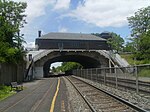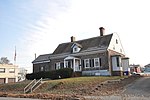Lyndhurst School District
The Lyndhurst School District is a comprehensive community public school district that serves students in pre-kindergarten through twelfth grade from Lyndhurst, in Bergen County, New Jersey, United States.As of the 2020–21 school year, the district, comprising nine schools, had an enrollment of 2,499 students and 185.0 classroom teachers (on an FTE basis), for a student–teacher ratio of 13.51:1.The district is classified by the New Jersey Department of Education as being in District Factor Group "DE", the fifth-highest of eight groupings. District Factor Groups organize districts statewide to allow comparison by common socioeconomic characteristics of the local districts. From lowest socioeconomic status to highest, the categories are A, B, CD, DE, FG, GH, I and J.
Excerpt from the Wikipedia article Lyndhurst School District (License: CC BY-SA 3.0, Authors).Lyndhurst School District
Fern Avenue,
Geographical coordinates (GPS) Address Nearby Places Show on map
Geographical coordinates (GPS)
| Latitude | Longitude |
|---|---|
| N 40.81001 ° | E -74.125582 ° |
Address
Lyndhurst High School Field House
Fern Avenue
07071
New Jersey, United States
Open on Google Maps









